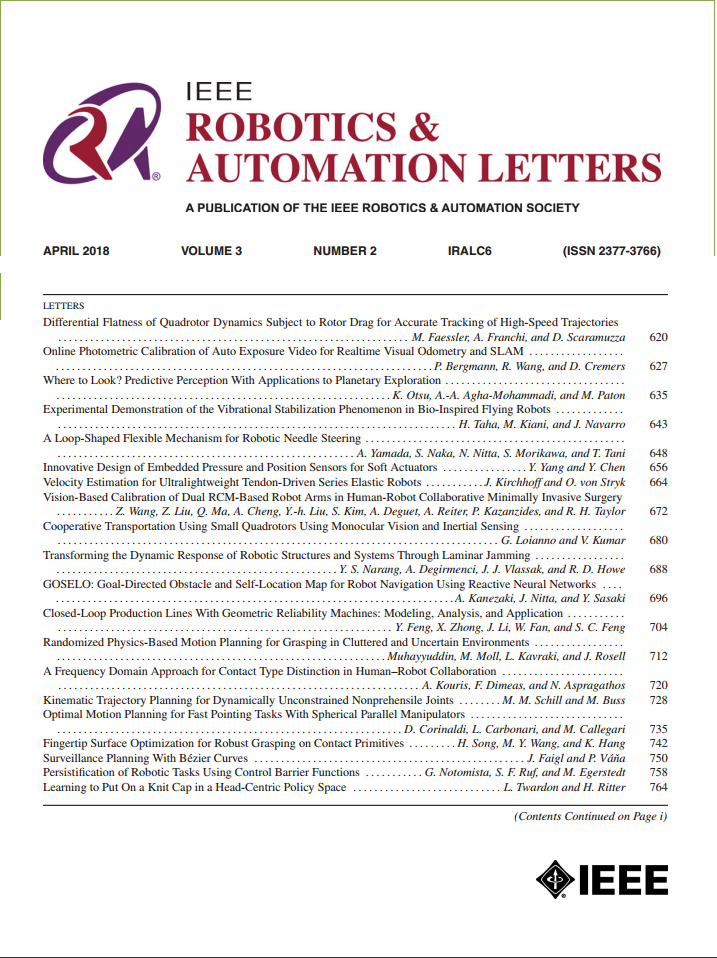基于深度强化学习的vit任务驱动自主启发式导航
IF 4.6
2区 计算机科学
Q2 ROBOTICS
引用次数: 0
摘要
在缺乏先验地图的未知环境中,实现有效的视觉理解对于构建高效的任务驱动自主导航系统至关重要。本文提出了一种基于视觉的目标导向自主导航系统。该系统采用一种新颖的混合视觉变压器架构作为其视觉感知的核心。我们的方法集成了一种中间路点探索策略,将给定任务分解为一系列连续的子目标。然后将这些子目标作为当前物理任务状态的重要组成部分馈送到场景编码器中,从而实现了场景表示与当前目标信息的无缝集成。在此基础上,我们利用深度强化学习框架为每个子目标开发局部导航策略。针对稀疏奖励函数问题的挑战,我们设计了一种新的危险区域传递函数。在仿真实验阶段,我们验证了自主导航系统的有效性,并将其与其他基于深度强化学习的导航方法进行了比较。实验结果表明,该方法在导航成功率和效率方面具有显著优势。此外,在Sim2Real实验中,与其他算法相比,我们的方法具有更强的鲁棒性和移动性。本文章由计算机程序翻译,如有差异,请以英文原文为准。
ViT-Enabled Task-Driven Autonomous Heuristic Navigation Based on Deep Reinforcement Learning
In unknown environments lacking prior maps, achieving effective visual understanding is crucial for building highly efficient task - driven autonomous navigation systems. In this paper, we propose a vision - enabled goal - oriented autonomous navigation system. This system uses a novel hybrid vision Transformer architecture as the core of its visual perception. Our approach integrates an intermediate waypoint exploration strategy, breaking down a given task into a series of consecutive subtargets. These subtargets are then fed into the scene encoder as an important part of the current physical task state, thereby achieving seamless integration of scene representation and current target information. Based on this, we utilize a deep reinforcement learning framework to develop a local navigation strategy for each subtarget. Given the challenge of addressing the sparse reward function problem, we design a novel hazardous region transfer function.In the simulation experiment stage, we validate the effectiveness of the proposed autonomous navigation system and compare it with other deep - reinforcement - learning - based navigation methods. The experimental results show that our method has significant advantages in terms of navigation success rate and efficiency. Additionally, in the Sim2Real experiments, compared with other algorithms, our method demonstrates greater robustness and mobility.
求助全文
通过发布文献求助,成功后即可免费获取论文全文。
去求助
来源期刊

IEEE Robotics and Automation Letters
Computer Science-Computer Science Applications
CiteScore
9.60
自引率
15.40%
发文量
1428
期刊介绍:
The scope of this journal is to publish peer-reviewed articles that provide a timely and concise account of innovative research ideas and application results, reporting significant theoretical findings and application case studies in areas of robotics and automation.
 求助内容:
求助内容: 应助结果提醒方式:
应助结果提醒方式:


